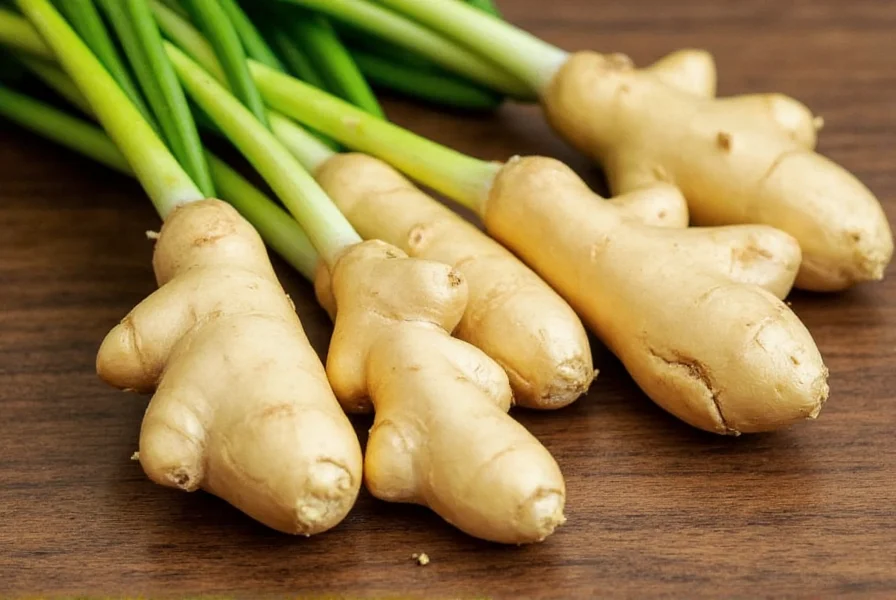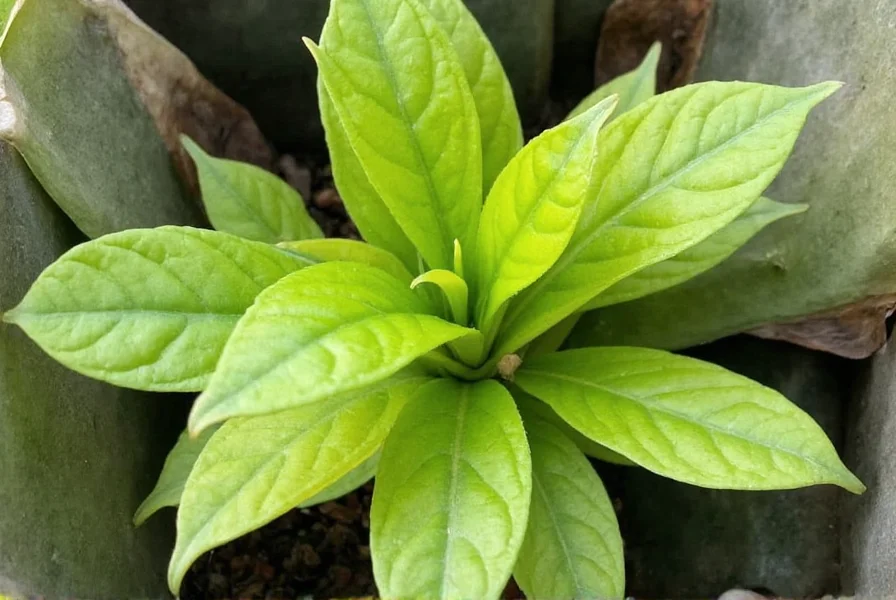Planting ginger root indoors is simple: select a fresh, plump ginger root with visible eye buds, soak it overnight, then plant in well-draining soil with the buds facing up. Place in indirect sunlight, keep soil consistently moist but not soggy, and maintain temperatures between 70-85°F (21-29°C). Ginger typically sprouts within 2-4 weeks and takes 8-10 months to mature for harvest.
Indoor ginger cultivation offers a rewarding way to grow your own fresh spice year-round, even without outdoor garden space. This tropical plant adapts well to container growing when provided with proper conditions. Unlike outdoor cultivation, indoor growing protects ginger from temperature extremes and gives you complete control over its environment.
Why Grow Ginger Indoors
Growing ginger root indoors provides several advantages over outdoor cultivation. You can maintain consistent temperatures ideal for ginger's growth, which prefers warm, humid conditions between 70-85°F (21-29°C). Indoor environments protect your ginger from frost, pests, and unpredictable weather. This controlled setting often results in healthier plants with fewer disease problems. Plus, having fresh ginger readily available in your kitchen makes cooking with this versatile spice incredibly convenient.
Materials Needed for Indoor Ginger Planting
Before starting your indoor ginger project, gather these essential items:
| Item | Purpose | Recommended Specifications |
|---|---|---|
| Fresh ginger root | Planting material | Plump with visible eye buds, preferably from organic source |
| Container | Root development space | 12-16 inches deep, wide drainage holes |
| Potting mix | Growing medium | Well-draining mix with 20% perlite or sand |
| Watering can | Moisture control | With narrow spout for precise watering |
| Humidity tray | Moisture environment | Optional but recommended for dry climates |

Selecting the Best Ginger Root for Indoor Planting
Choosing quality ginger root significantly impacts your success with how to grow ginger in pots indoors. Look for plump, firm roots with smooth skin and visible eye buds (small bumps where growth emerges). Organic ginger often works better as non-organic varieties may be treated with growth inhibitors. The best ginger root for indoor planting shows multiple eye buds and feels heavy for its size, indicating good moisture content. Avoid roots with wrinkles, soft spots, or mold.
Step-by-Step Guide to Planting Ginger Indoors
Follow these detailed steps for successful indoor ginger cultivation:
- Prepare the ginger root: Soak the root in warm water for 1-2 hours to rehydrate and stimulate growth. For best results when learning how to plant ginger root indoors, cut the root into 1-2 inch pieces, ensuring each piece has at least one eye bud.
- Choose the right container: Select a wide, shallow pot at least 12 inches deep with adequate drainage. Ginger grows horizontally, so width matters more than depth. Terra cotta pots work well as they allow soil to breathe.
- Prepare the soil mix: Create an ideal soil mix for ginger plants by combining two parts potting soil, one part compost, and one part perlite or coarse sand. Ginger prefers slightly acidic soil with a pH between 5.5-6.5.
- Plant the ginger: Fill your container halfway with soil mix. Place ginger pieces horizontally with eye buds facing up, spacing them 6-8 inches apart. Cover with 1-2 inches of soil.
- Water appropriately: Water thoroughly after planting, then maintain consistent moisture without saturation. The soil should feel like a damp sponge—never soggy.
Indoor Ginger Plant Care Requirements
Proper care ensures healthy growth when growing ginger root indoors. These tropical plants require specific conditions that mimic their natural habitat:
Light Requirements
Ginger prefers bright, indirect light. Direct afternoon sun can scorch leaves, while too little light results in weak growth. An east-facing window provides ideal morning light. If natural light is insufficient, supplement with a grow light for 6-8 hours daily. Understanding how much light does ginger need indoors prevents common growth problems.
Temperature and Humidity
Maintain temperatures between 70-85°F (21-29°C) for optimal growth. Ginger suffers below 50°F (10°C). During winter, keep plants away from cold drafts and heating vents. Ginger thrives in 70-80% humidity—use a humidity tray or room humidifier if your home is dry. Misting leaves daily helps maintain moisture levels.
Watering Schedule
Keep soil consistently moist but never waterlogged. Check soil daily by inserting your finger 1 inch deep—water when the top inch feels dry. Reduce watering in winter when growth slows. Use room-temperature water to avoid shocking the roots. Proper indoor ginger plant care tips include ensuring excellent drainage to prevent root rot.
Fertilizing
Feed monthly during active growing season (spring through summer) with a balanced, water-soluble fertilizer diluted to half strength. Avoid high-nitrogen fertilizers that promote leaf growth at the expense of rhizome development. Organic options like compost tea work well for ginger.

Ginger Growth Timeline and Harvesting
Understanding the when to harvest homegrown ginger timeline helps maximize your yield:
- Weeks 2-4: First shoots emerge from soil
- Months 2-3: Plant develops full leaf structure
- Months 4-6: Active rhizome development
- Months 8-10: Ready for harvest (full maturity)
For a continuous harvest, you can carefully dig up small portions of rhizome while leaving the plant intact. For full harvest, wait until leaves yellow and die back naturally, typically after 8-10 months. Reduce watering 2-3 weeks before harvest to dry the soil slightly, making extraction easier.
Troubleshooting Common Indoor Ginger Problems
Even with proper care, you might encounter these common problems growing ginger indoors:
Yellowing Leaves
Cause: Overwatering or poor drainage
Solution: Allow soil to dry slightly between waterings and ensure proper drainage. Repot if necessary with a more porous mix.
No Sprouting
Cause: Dormant root, incorrect planting orientation, or insufficient warmth
Solution: Ensure eye buds face upward, maintain temperatures above 70°F (21°C), and be patient—ginger can take 4 weeks to sprout.
Leaf Drop
Cause: Low humidity, temperature fluctuations, or underwatering
Solution: Increase humidity with a pebble tray, maintain consistent temperatures, and adjust watering schedule.
Pests
Spider mites and mealybugs occasionally affect indoor ginger. Treat with insecticidal soap or neem oil solution. Prevention includes regular leaf cleaning and proper air circulation.
Extending Your Ginger Harvest
After harvesting, store ginger properly to maximize freshness. Keep unpeeled ginger in a paper bag in the refrigerator crisper drawer for 2-3 weeks. For longer storage, freeze peeled ginger pieces. You can also dry or pickle ginger for extended preservation. Save a portion of your harvest to replant for continuous production.
Frequently Asked Questions
Can I grow ginger indoors from grocery store ginger?
Yes, you can grow ginger indoors from grocery store ginger, but organic varieties work best as non-organic ginger is often treated with growth inhibitors. Look for plump roots with visible eye buds for the highest success rate when planting ginger root indoors.
How long does it take to grow ginger indoors?
Ginger typically takes 8-10 months to reach full maturity indoors. You'll see sprouts emerge in 2-4 weeks after planting, but the rhizomes need the full growing season to develop properly. Patience is essential when learning how to grow ginger in pots indoors.
Does ginger need direct sunlight indoors?
No, ginger prefers bright, indirect light rather than direct sunlight indoors. Direct afternoon sun can scorch the leaves. An east-facing window providing morning light is ideal. If growing in low-light conditions, supplement with a grow light for 6-8 hours daily for optimal indoor ginger plant care.
Why is my indoor ginger plant not growing?
Common reasons include: dormant root (try soaking longer), incorrect planting orientation (eye buds should face up), insufficient warmth (needs 70-85°F), or poor quality root. Ensure you're using fresh ginger with visible eye buds and maintaining proper indoor growing conditions for successful ginger cultivation.
How often should I water indoor ginger plants?
Water when the top inch of soil feels dry, typically every 2-3 days during active growth. Ginger needs consistently moist but not soggy soil. Reduce watering in winter when growth slows. The ideal moisture level feels like a damp sponge—proper watering is crucial for healthy indoor ginger plant care.











 浙公网安备
33010002000092号
浙公网安备
33010002000092号 浙B2-20120091-4
浙B2-20120091-4